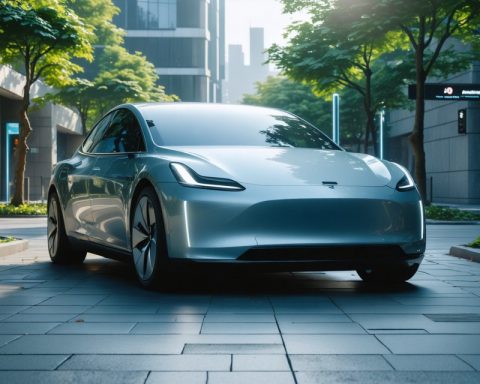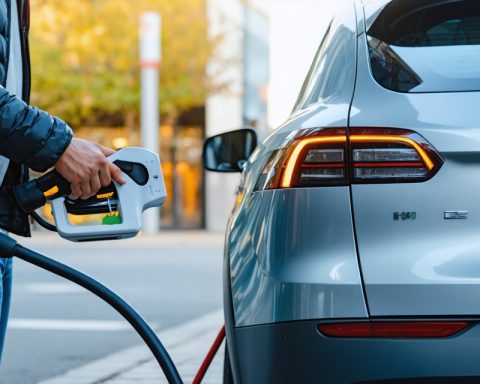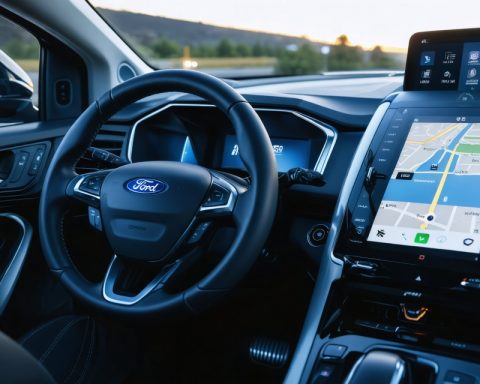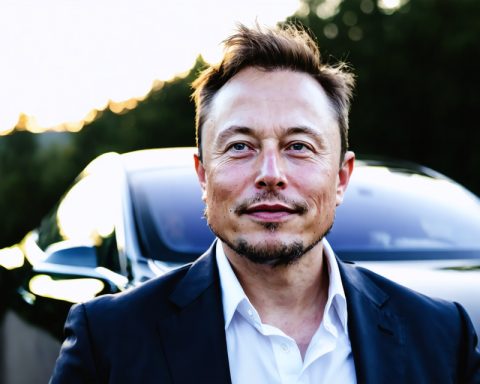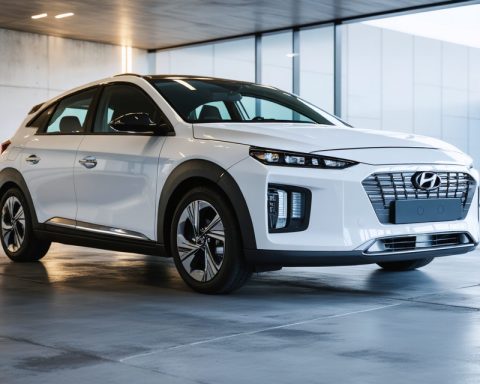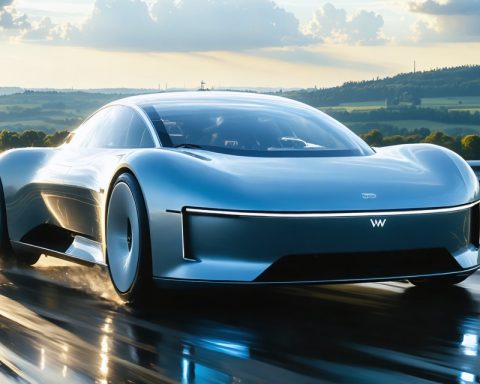- Maryland aims to significantly increase EV sales, targeting almost half of new car sales by 2026, inspired by California’s Clean Cars II standards.
- Despite the ambition, only 13% of cars sold last year were electric, highlighting the challenge of meeting these bold targets.
- Insufficient charging infrastructure poses a major hurdle, leading to calls for a two-year delay in imposing fines on manufacturers not meeting targets.
- Lawmakers argue that delaying penalties allows essential infrastructure development, while environmental advocates worry about undermining climate goals.
- Flexibility through carbon credits offers manufacturers alternative compliance options, exemplified by companies like Tesla.
- Maryland’s scenario mirrors broader national challenges, emphasizing the delicate balance between ambition and readiness in transitioning to sustainable transportation.
- The situation underscores that achieving sustainability requires practical planning and infrastructure development beyond mere legislative targets.
Amid the rolling hills and coastal plains of Maryland, a battle ensues between ambition and practicality. Two years ago, the state championed a bold vision to transform its roads by significantly boosting electric vehicle (EV) sales as part of its effort to curb climate change. Maryland joined the ranks of a national coalition, inspired by California’s Clean Cars II emissions standards, intending to phase out gas-powered vehicles progressively. The goal was audacious: ensure that almost half of the new cars on the road be electric by 2026, a profound shift in the automotive landscape.
Flash forward, and the reality check looms. Only 13% of cars sold last year were electric. The commitment now appears more aspirational than achievable. Manufacturers are under mounting pressure—not only to meet these lofty standards but also to navigate potential fines if they fall short. The legislation requires automakers to achieve 43% of electric vehicle sales by 2027, escalating to 51% by the following year. For many in the industry, these numbers paint a picture of impossibility, raising the stakes and bringing Maryland’s would-be eco-paradise into sharp focus.
The crux of the issue lies in the state’s electric charging infrastructure, or rather, the lack thereof. Proponents of delaying fines argue that Maryland simply isn’t ready, lacking the vast network of charging stations needed to support a substantial increase in electric vehicles. Without more chargers, drivers remain hesitant, worried about finding themselves stranded with a depleted battery far from home. While the debate rages, the ticking clock amplifies tensions.
Lawmakers, led by Delegate Dana Stein, are advocating for a pragmatic pause—a two-year deferment of financial penalties. This delay would allow time to set up the necessary infrastructure and avoiding pushing consumers to nearby states—you can’t inspire change if people can’t buy the cars at home. It’s a measured approach, one that has invited both nods of agreement and waves of criticism.
Environmental advocates fear that easing the EV sales mandate sets a dangerous precedent, potentially causing a ripple effect as other states consider relaxing their standards. They argue the urgency of the climate crisis necessitates unwavering commitment and view Maryland as a bellwether. If Maryland—the trailblazer—folds, others may quickly follow suit, dismantling the national coalition’s united front.
Yet, more moderate voices in the debate suggest that flexibility is key. There are legal tools available, such as carbon credits, allowing manufacturers to meet targets in creative ways. Companies like Tesla thrive in this space, selling thousands of these credits to help others comply with strict regulations.
Meanwhile, Maryland’s charging stations dot the landscape unevenly, a patchwork of opportunities that rarely meet demand. Bolstered by state tax credits, however, electric vehicles have grown increasingly popular—boasting double the national average in sales. This growth underscores a mainstream readiness to embrace electrification if only the infrastructure can catch up.
The narrative unfurls within a national context—a backdrop complicated further by federal tensions. Changes in the White House have led to shifts in environmental policies, jeopardizing support mechanisms crucial to achieving these local benchmarks.
Maryland hangs in the balance, a microcosm of the broader tension between environmental ambition and systemic readiness. Will it maintain its ambitious vision, or will pragmatism prevail, signaling a recalibration of national efforts?
At heart, Maryland’s unfolding drama reflects a vital truth: The road towards sustainability is rarely straight and often requires stops to recharge, both literally and figuratively. As policymakers weigh tough decisions, they must ensure that the path towards a greener future remains clear and achievable for all.
Will Maryland’s Electric Vehicle Vision Become Reality? Discover the Challenges and Opportunities Ahead
Maryland’s Electric Vehicle Push: A Detailed Analysis
Maryland’s ambitious goal to convert nearly half of its new car sales to electric vehicles (EVs) by 2026 faces significant hurdles. As of last year, only 13% of vehicles sold were electric, highlighting a massive gap between aspirations and current realities. This gap is largely due to challenges in infrastructure and consumer readiness.
The Infrastructure Challenge
One of the primary obstacles to achieving Maryland’s vision is the insufficient electric vehicle charging infrastructure. Despite Maryland boasting more EV sales relative to the national average, the network of charging stations is unevenly distributed across the state. Drivers worry about the “range anxiety”—the fear of depleting a car’s battery far from a charging station. This concern inhibits many potential buyers from making the switch to electric.
# Actionable Steps to Improve Infrastructure
1. Expand Charging Network: Partner with private companies to rapidly expand the number of charging stations, particularly in rural and underserved areas.
2. Incentivize Installations: Provide tax credits and incentives for businesses and residential areas that install EV chargers.
3. Public-Private Partnerships: Collaborate with utility companies to integrate charging solutions into existing infrastructure.
Policy and Legislative Landscape
Lawmakers, including Delegate Dana Stein, have proposed delaying the enforcement of fines on car manufacturers not meeting EV sales targets. This pragmatic pause would provide the necessary time to bolster infrastructure and adapt to market conditions without penalizing automakers or consumers.
Potential Solutions to Boost EV Adoption
– Carbon Credits and Flexibility: Leveraging carbon credits allows for flexibility. Manufacturers can work with companies like Tesla, which sell carbon credits to comply with emissions regulations.
– Educational Campaigns: Launch statewide campaigns to educate consumers on the benefits and practicalities of EV ownership, addressing myths and enhancing acceptance.
EV Market Trends and Predictions
Globally, the EV market is expected to continue its rapid growth, driven by advancements in battery technology, decreasing production costs, and increased environmental awareness. Maryland is positioned to leverage these trends with appropriate policy adjustments and infrastructure investments.
# Pros and Cons of Maryland’s EV Strategy
– Pros:
– Reduction in greenhouse gas emissions if targets are met.
– Long-term economic benefits through green technology investments.
– Enhanced public health from decreased air pollution.
– Cons:
– High initial costs associated with infrastructure development.
– Risks of consumer pushback if charging infrastructure is inadequate.
– Potential economic ramifications from shifting regulatory timelines.
Conclusion: Actionable Recommendations
To ensure that Maryland remains on track to meet its electric vehicle goals:
1. Invest in Infrastructure: Accelerate efforts to build a comprehensive and accessible charging network across the state.
2. Enhance Incentives: Increase financial incentives for both buyers and sellers of EVs to encourage broader adoption.
3. Monitor Progress: Regularly assess infrastructure and adoption rates, adjusting strategies as necessary to stay aligned with goals.
While challenges persist, Maryland has the opportunity to set a national precedent for successfully transitioning to sustainable transportation. By addressing infrastructure concerns and fostering a supportive legislative environment, Maryland can indeed become a leader in the electric vehicle revolution.
For more information about Maryland’s environmental initiatives, visit the official Maryland Government website.


